i hope i am not offending anyone by saying that wyndham is remarkably unremarkable. it would also be a little bit unfair, in the sense that that description probably applies to many places here in australia as well as anywhere in the world.

you get to wyndham by taking a left turn at the eastern end of the gibb, except that the road then sort of ends there, which is probably why most people take a right towards kununurra instead, to see the bungle bungles or to drive towards katherine and darwin.
or maybe people avoid wyndham becasue it is apprently australia’s hottest town?
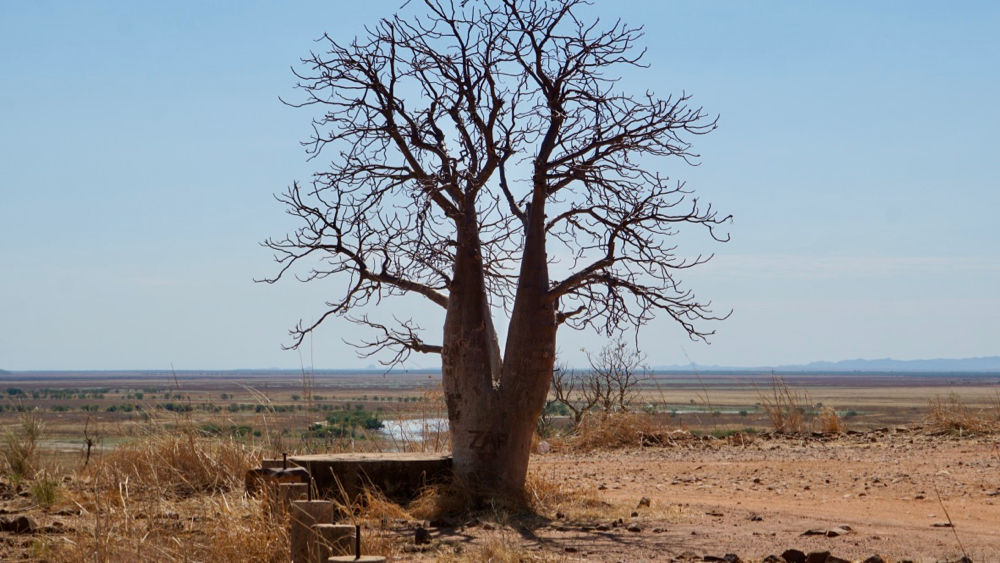
it’s not that there is nothing to see in wyndham; there is always something to see. being the northernmost town in western australia it was of course an important military outpost in the first world war (the remnants of the radio station are still visible, hidden among the boab trees). a ship was sunk here! and in the second world war the town was attacked by japanese airplanes.

they probably tried to bomb the meatworks, the most important industry in wyndham. established in 1913 it was closed in 1985 and was the economic mainstay of the township. remarkable.
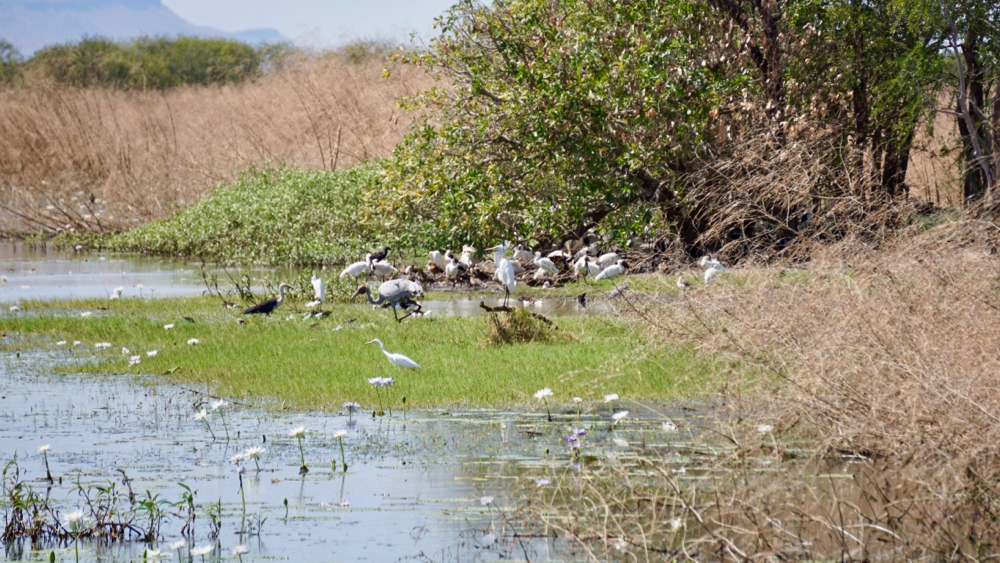
there is also a remarkably interesting billabong hidden a bit south of wyndham. as it turns out the wetlands around the town are of global significance due to the many birds that nest here or just pass through.
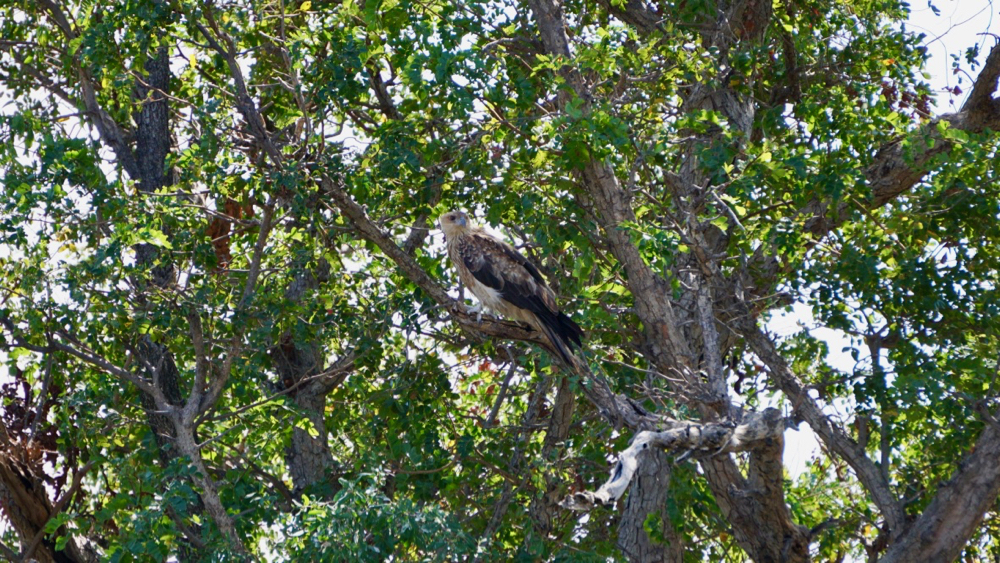
remarkably the other waterbirds didn’t mind the rather large bird of prey in the tree next to the billabong. our resident animal expert – nat – said it was a white bellied sea eagle, which might be why the birds didn’t feel threatened (the sea eagles eat fish).
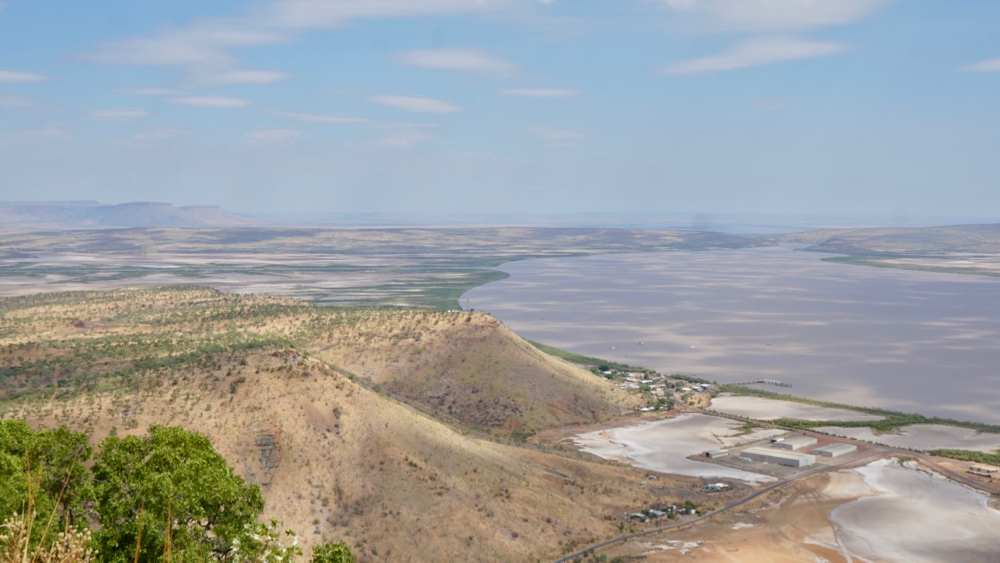
the outlook above wyndham is remarkable for the fact that one can see five rivers from here: the pentecost (which we crossed on the gibb), the durack, the ord (which we crossed as well), the king and the forrest. there is certainly a remarkable amount of water visible from the lookout, as well as a remarkable absence of town.
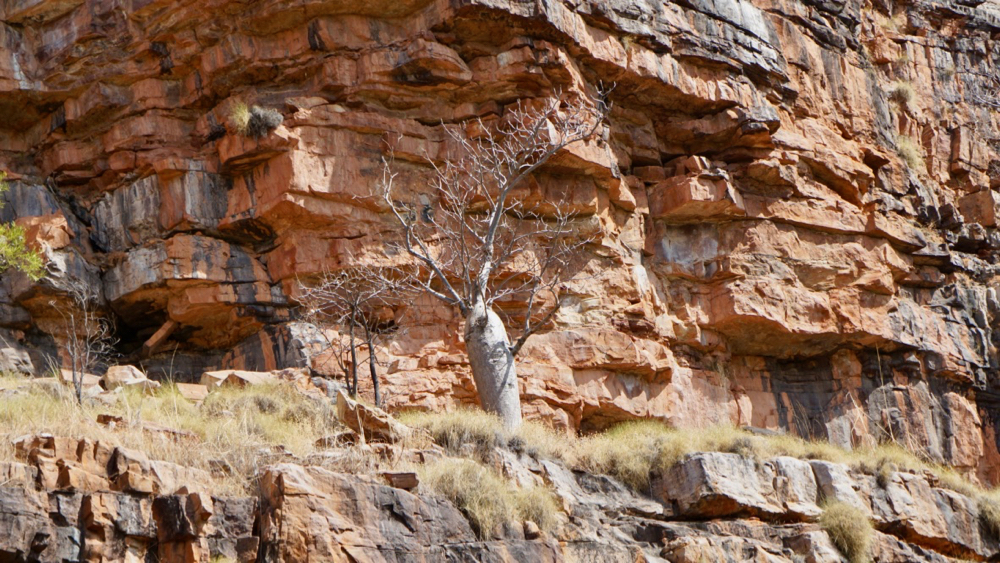
wyndham is, a bit like derby, surrounded by mud flats. crossing these flats to the south, and following a rather remote dirt road for about 20 km one find a cliff face.
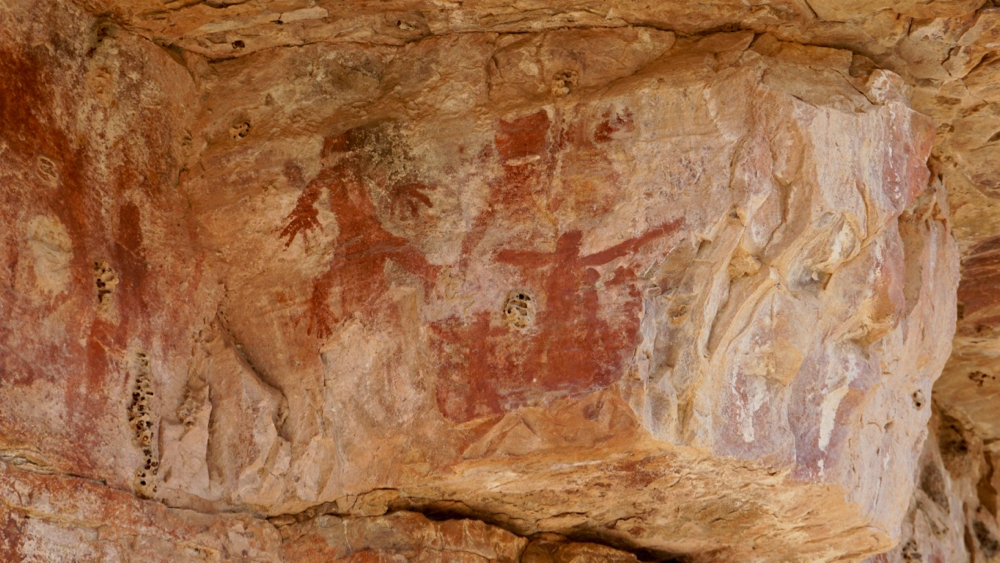
it’s unfortunate that aboriginal rock paintings are generally not well signposted. apparently there is a minority of people living in this country (as well) who take joy in destroying artefacts that are historic as well as culturally significant and meaningful to this date.
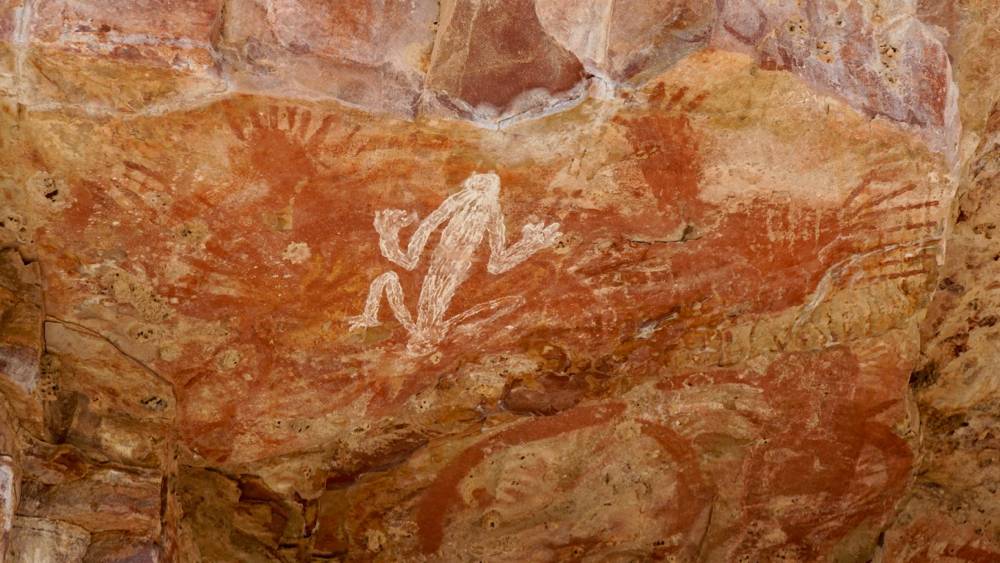
even though we knew the general location we had to use a bit of guesswork and luck to find the spot. the spot is actually quite remarkable and there are quite a few signs of human habitation.
remarkably we had another puncture which we managed to repair with a plug. we’re getting pretty good at fixing them but i must say i am more than a little ticked off that we had 4 punctures in 6 days. what are those cooper zeon ltz tyres made of?
